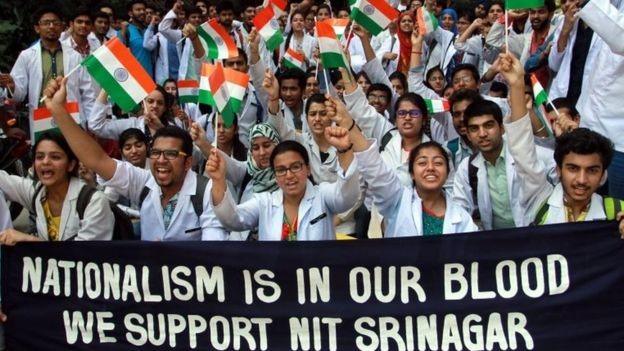Viewpoint: Living in the shadow of curfew in Kashmir
- Published
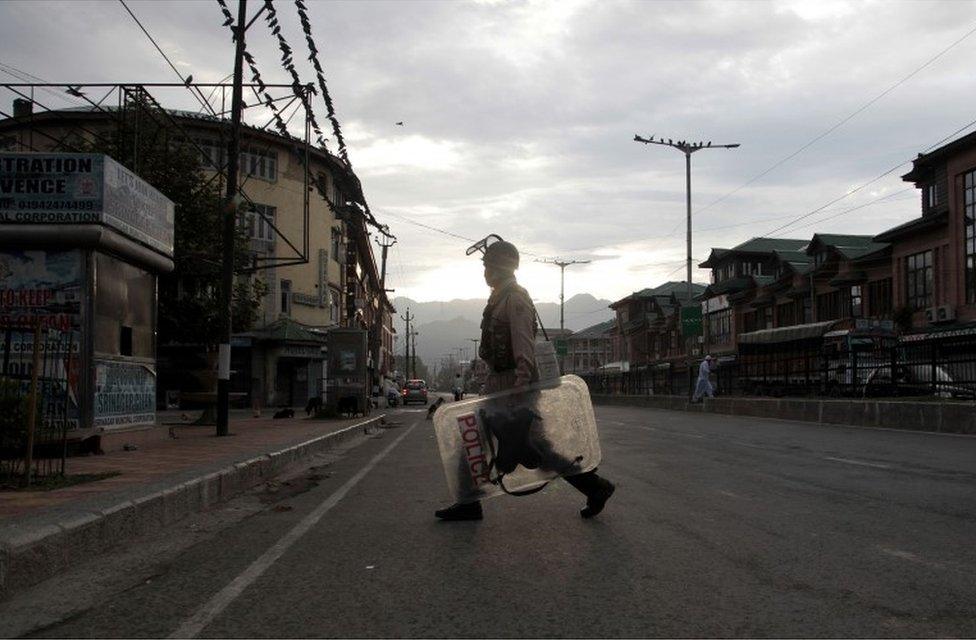
The curfew was lifted in parts of Kashmir after more than 50 days
For weeks Indian-administered Kashmir has been plunged into the worst violence in the region for some years. There has been a curfew and bloody clashes between protesters and security forces, all sparked by the death of a popular, young militant leader. Journalist Gowhar Geelani reflects on life for Kashmiris under the curfew.
I have no idea about how long the longest curfew lasted and where it happened.
In Kashmir, we endured 51 days of curfew before it was lifted in parts of the troubled valley on Monday.
All these days, I have considered myself a prisoner in my Kashmir, which many foreigners often refer to as a "paradise on earth".
Our paradise has been turned into a virtual hell.
I think Kashmiris may not be scared of going to prison anymore, as most of them are quite literally inmates of this beautiful prison we live in.
Out of touch
Mostly, I have been confined to the four walls of my house, reading books on Kashmir by local and foreign authors.
Shutting down of mobile data services in the region, and much of the mobile telephone network has meant that I have been mostly out of touch with the rest of the world. There have been no prayers at Srinagar's Jama Masjid, or Grand Mosque, for seven Fridays in a row.
Sometimes, I have stepped out to fetch some essentials but the shopkeepers with downed shutters, even in the interior lanes and bylanes, tell me that they're running short of supplies.
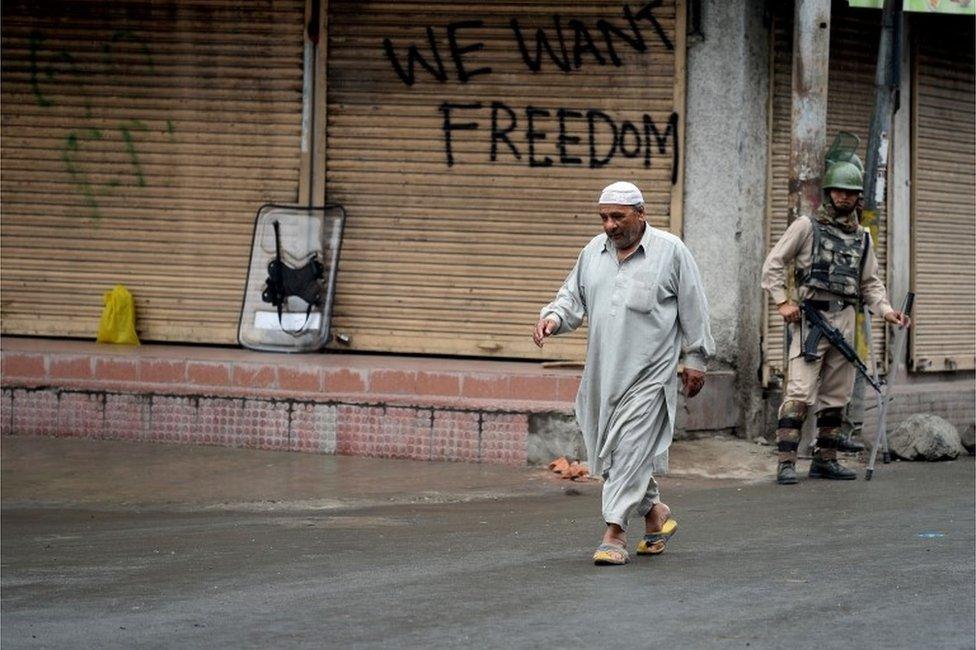
The Kashmir valley has been rocked by violence since the killing of Burhan Wani on 9 July
In the evenings, I have generally watched debates and discussions on Kashmir on Indian television channels, much of it vitriolic and partisan. As an analyst, I have often taken part in some of these debates to offer my perspective from the ground.
At home, I do push-ups as a de-stressing technique. I often sprint upstairs and downstairs to keep myself fit.
Outside, people are demanding their right for self-determination and raising slogans demanding azadi (freedom) while some angry young men pelt stones at Indian security forces who respond with teargas shells, pellet guns and bullets, causing deaths and injuries.
'New normal'
Nearly 70 people, mostly young men, have been since killed in clashes between the protesters and security forces, and thousands more have been injured in the worst violence seen in the region for years.
More than 3,000 people, mostly teenagers, have been been hit by "pellets", external - tiny pieces of metal shrapnel - that have been used against civilian protesters by security forces.
Why mass funerals spur violence in Kashmir
Why the Kashmir killings could have been avoided
Firing at stone-throwers in Indian-administered Kashmir
Concern in Kashmir over police pellet guns
Why Kashmiri youth supported militant Burhan Wani
Kashmiri Hindus: Driven out and insignificant
This, then, is our new normal in Kashmir.
Armed resistance to Indian rule broke out in the Kashmir Valley in 1989, with some groups calling for independence and others calling for union with Pakistan.
This was to change our lives, stories and literature forever. I belong to a generation of Kashmiris that has witnessed the horrors of violence since.
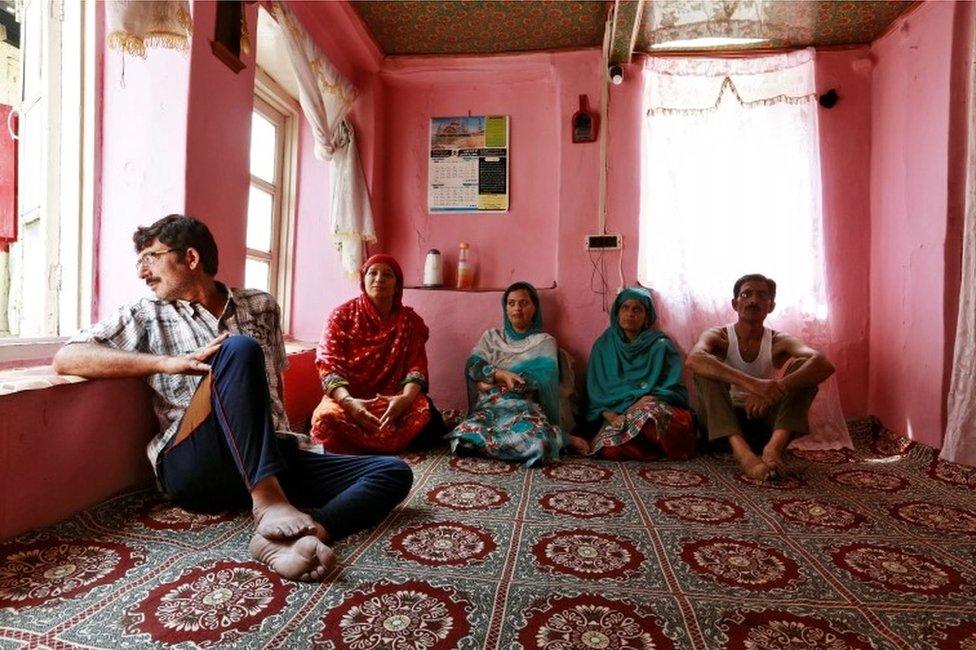
People have been confined to their homes during the curfew
There is no doubt in my mind that much of the violence that has ravaged Kashmir continues to emanate from Delhi which continues with its policy of suppressing democratic dissent with brute force.
School-going children of my generation were coerced into learning words and phrases like curfew, crackdown, cordon, custody killing, catch and kill, torture, interrogation, arrest, and detention.
When it was time for us to learn A for apple, B for ball, and C for cricket, we learned A for army, B for bullet and C for curfew. The curfews and killings became part of our "normalcy".
Daily violence
As we grew older, we learned newer terms like fake encounter, extra-judicial killing, custodial disappearance, and mass graves.
Children of my age got used to daily violence. It was natural for me or anyone else to feel very angry at the people who marched in our streets with weapons held high.
We were angry at the Indian security forces who frisked us, asked us to prove our identity in our own land, threw our school bags away, ordered us to do push-ups and squats as punishment, and hurled choicest of invectives at us just because we were Kashmiris.
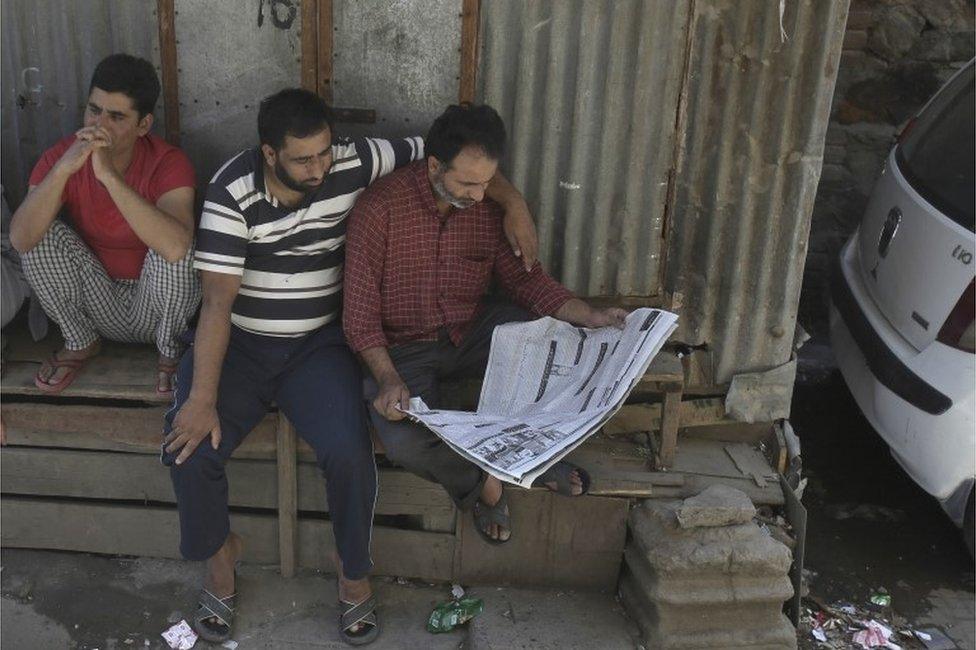
Kashmiri men read the newspaper during the curfew in Srinagar
On the other hand, a certain pro-Pakistan rebel group was on a mission to thrust upon us a particular lifestyle and code of conduct in the 1990s. We were supposed not to watch films. Women and girls were asked to observe purdah.
Twenty-seven years hence, the curfews and killings continue to haunt us.
Since the killing of Burhan Wani on 8 July, the valley is restive again.
Most Kashmiris may not choose the same path that Wani did for himself, but they overwhelmingly support his defiance and resistance which they perceive as symbolic and necessary.
Immense popularity
Many locals adore him for he chose to fight, without seeking Pakistan's support.
Kashmir's new-age rebellion enjoys immense popularity for multiple reasons.
One, the armed rebels do not target civilians.
Two, their video messages on social media are moderate as they welcome Hindu pilgrims to the holy Amarnath cave for their annual pilgrimage and favour the return of migrant Kashmiri Pandits to their original homes.
Thirdly, they function independently. And finally, their defiance has symbolic importance.
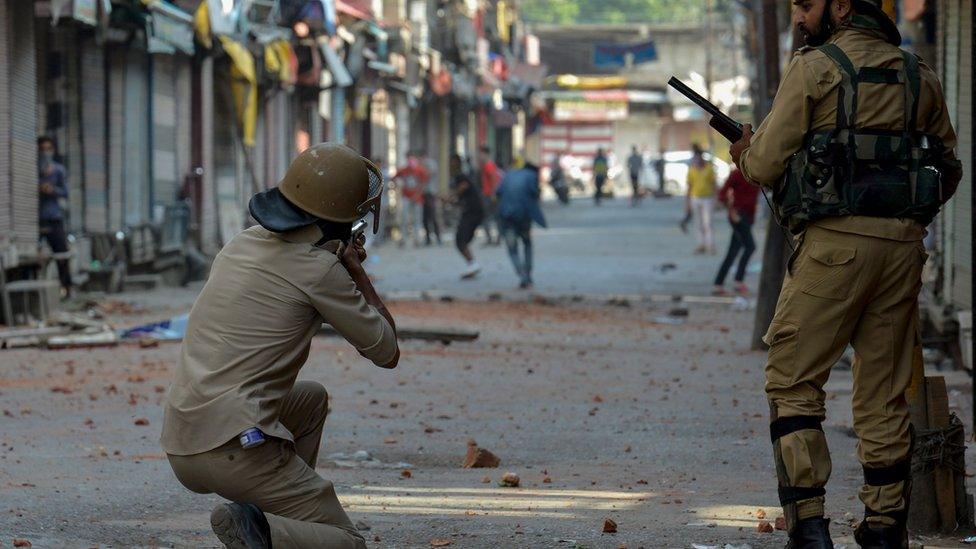
The violence is the worst seen in the region for years
As many Kashmiri parents are confined to their homes, reading history books on their homeland, their children are asking questions.
What is India? Who is Jawaharlal Nehru? What is a referendum? Why has India occupied our land? When will we get freedom?
'Hearts and minds'
The fact that Delhi talks about "winning the hearts and minds", external of Kashmiris even 69 years after the partition, when Pakistan and India became two independent nations and Kashmir got divided between the two by a de-facto border, is a telling remark on India's standing in the disputed Himalayan valley.
For many in Kashmir, it is a battle between memory and forgetfulness. And memory doesn't fade away easily.
Gowhar Geelani is a Srinagar-based journalist and political commentator.

A brief history of Kashmir
1846 - Creation of the princely state of Kashmir.
1947-8 - Kashmir's Maharaja hesitates over whether to join India or Pakistan, prompting the two countries to go to war over the territory.
1949 - Kashmir is partitioned between India and Pakistan, with a ceasefire line agreed.
1962 - China defeats India in a brief war in a dispute over the Aksai Chin border area.
1965 - Second India-Pakistan war over Kashmir ends in a ceasefire.
Rise of Kashmiri nationalism: Jammu Kashmir Liberation Front is founded with the aim of forming an independent state through the reunification of Indian-administered and Pakistan-administered Kashmir.
1972 - Simla Agreement: India and Pakistan formalise the ceasefire line as the Line of Control as part of new resolve to negotiate differences after their war which ended in Bangladesh splitting from Pakistan.
1980-90s - Kashmir insurgency: Discontent over Indian rule leads to armed resistance, mass protests and a rise in Pakistan-backed militant groups. Tens of thousands of people are killed.
1999 - India and Pakistan engage in a brief conflict after militants cross the Line of Control into the Indian-administered district of Kargil.
2008 - India and Pakistan open trade route across the Line of Control for the first time in six decades.
2010 - Anti-India protests in Indian-administered Kashmir in which over 100 youths are killed.
2015 - Political watershed: Elections in Jammu and Kashmir see India's ruling Hindu nationalist BJP party emerge as a major political player in the region for the first time when it forms part of a coalition government with the regional Muslim People's Democratic Party.
- Published11 July 2016
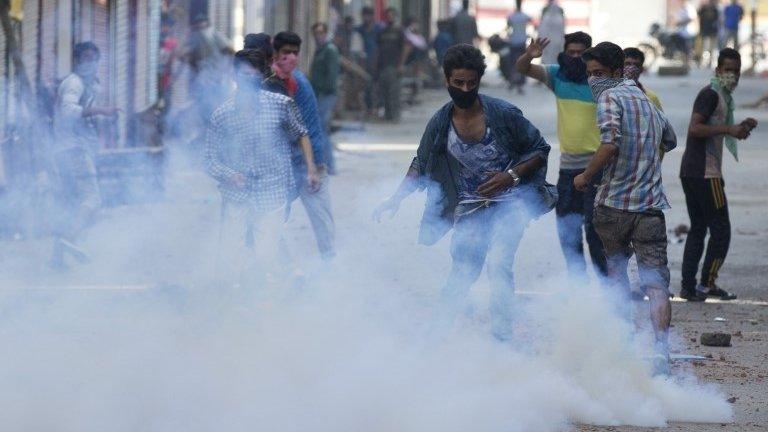
- Published11 July 2016

- Published8 April 2016
